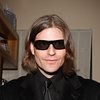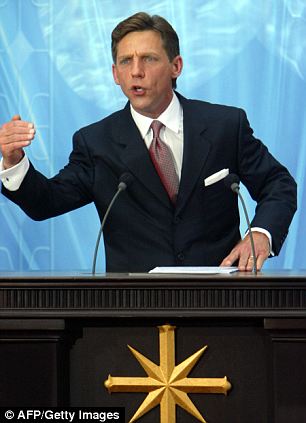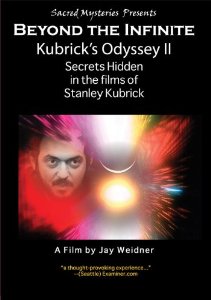“The United States has it’s own propaganda, but it’s very effective because people don’t realize that it’s propaganda. And it’s subtle, but it’s actually a much stronger propaganda machine than the Nazis had but it’s funded in a different way. With the Nazis it was funded by the government, but in the United States, it’s funded by corporations and corporations they only want things to happen that will make people want to buy stuff. So whatever that is, then that is considered okay and good, but that doesn’t necessarily mean it really serves people’s thinking – it can stupefy and make not very good things happen.” – Crispin Hellion Glover
Recently, I had the distinct opportunity to see “Crispin Glover Live”, where he gave a series of slide show presentations that left me in a state of what I would describe as bemused confusion at what exactly I was witnessing. After all, how does one begin to fully explain what a reading and rendering of a book about the intricacies of rat catching and cadavers from a professional in the field of dissection and listing of anatomical features interspersed with what appear to be a series of drawings, book passages, and black-and-white photographs from the 1950s really mean? Next, he showed his surreal movie “What is It?”, a Jungian-like exploration of the unconscious adventures of a motley cast of characters, mostly with Down Syndrome, that involved a white guy in black face, a running motif of a dissolving snail being salted, and Crispin Glover himself playing some kind of cruel king of the underworld surrounded by a bevy of topless women with animal heads and one grown man in a diaper lying a crib. Honestly, you can’t make this crazy shit up! But, Crispin Glover can and did make this up…creating what I’m sure was one of the greatest WTF moments in many warped peoples’ minds that were lucky enough to be there that night with me at the Alamo Drafthouse.
Most of you, however, probably remember Crispin Glover not from his personal surreal film oddities like the aforementioned “What is It?” but rather his acting in idiosyncratic roles like Dale in David Lynch’s Wild at Heart. It was his breakthrough role as the nerdy and socially-awkward George McFly, who is able to rise to the occasion against his arch nemesis Biff with the help of his future son played by Michael J. Fox, where Crispin Glover became a recognizable actor in Hollywood. Unfortunately, one gets the impression that Hollywood never really fully appreciated his decidedly bizarre choice of characters that were to follow and nor especially the anti-corporate ethos regarding his own creative work. Even on the celebrity talk show circuit, Glover was quickly typecast as a dangerous weirdo, as his appearance on Letterman would clearly show when he was kicked off the show for well…”kicking on the show”.
However, behind the largely unpretentious, darkly humorous, and quirky character turns of Glover lay a much overlooked critical and very perceptive mind that saw the Hollywood system for what it really represented to those unfamiliar with its inner workings. This came out during an enlightening session of Q&A at the end of the movie where Glover talked about the creative straight jacket of Hollywood and how experimental movies such as his own are essentially locked out of any commercial distribution through the main theater chain outlets. This obviously isn’t that surprising given that the commercial theater chains only real objective is to maximize profit on a per screen basis and will quickly cut anything that isn’t pulling in the numbers they want, which is why you rarely see any documentaries playing on the silver screen except in a handful of small theaters that also play indie and foreign films. It was during this Q&A that Crispin Glover spoke about what became something of a defining moment for him. He was working on the set of Back to the Future that would soon make him into a household name with director Robert Zemeckis. Originally, after Marty McFly returned to his new and improved family that now lived in a wealthy neighborhood where the kids all had great professions as opposed to low-paying jobs, the McFly family had a black servant. Glover politely mentioned to the director how this might appear racist to black audiences, and Zemeckis wisely changed the servant to a newly humbled Biff putting a second coat of wax on George McFly’s fancy car. However, the underlying assumption of the movie remained unchanged in Glover’s mind as he relates in this interview on the Opie and Anthony Show where he speaks about the controversy surrounding his feud with Robert Zemeckis.
So, just what is the subtext of Back to the Future’s ending? “A self-realized and happy existence equals a rich and materialistic life.” Is this the message? Or, am I oversimplifying the underlying message of Back to the Future? Could the onetime yuppie star of the greed obsessed 1980s, Michael J. Fox, who started out as a teenage Reagan wet dream in the sitcom “Family Ties” and graduated to movies that celebrated the ego-centric corporate ladder climbing purpose of life in movies such as The Secret of My Success really be about nothing more profound than the joys of materialism? When Crispin Glover probed the question further, Robert Zemeckis told him point blank- “Listen, I don’t care about artistry. I want to be rich!!” There you have it. And, no doubt with such blockbusters as Forest Gump under his belt, Robert Zemeckis would indeed become rich beyond his wildest dreams as he knew all too well how to cater to audiences’ expectations in terms of what makes for mass entertaining movie. This blockbuster formula would be followed to a “T” even better by Hollywood’s Golden Boy director of the last 40 years, Steven Spielberg, beginning with Jaws released back in 1975.
It is a formula that has been followed perhaps a bit too well over the years, and Glover reserves some particularly pointed barbs for Spielberg that you can see in a classic chapter that he wrote in the brilliantly subversive book, Apocalypse Culture II. Interestingly, the book was edited and published by Adam Parfrey of Feral House, who also just so happens to play the Minstrel character in Glover’s “What is It?” movie mentioned previously. I specifically asked Crispin Glover about the comments he made in Apocalypse Culture II and Spielberg (in particular) for those in attendance that were unfamiliar with the book, and he reiterated again how he didn’t like Steven Spielberg movies at all and thought that they were totally subservient to the corporate ethos. In fact, he said that the only movie he somewhat liked of Spielberg’s entire oeuvre was A.I. that was released as something of a homage to Stanley Kubrick after he died and never got the chance to do the film. Kubrick told Spielberg that he thought he should do the movie instead given his worries that he might make the movie too cerebral, whereas we all know we needn’t worry about Spielberg making something too intellectually probing. However, while I would agree with Glover that A.I. had some rather interesting philosophical themes, I too wish that Kubrick had been the one to make the movie, since I’m sure he would have made a much more profound and interesting film.
At one point in Apocalypse Culture II, Glover chastises Spielberg for completely missing the point of Kubrick’s philosophy as when Spielberg calls Kubrick’s movies “hopeful”. He then rhetorically asks, “Was A Clockwork Orange hopeful? Was Full Metal Jacket hopeful?” Clearly, one begins to wonder just how Spielberg was seeing these movies if indeed he was seeing them at all. Kubrick was often criticized for portraying humanity as too dark, too unethical, and too morally ambiguous…but hopeful? Hardly a word I would use to describe his work. This isn’t to say that there weren’t little moments in his pictures like his future wife, Christiane, singing a German folk song to a group of hardened WWI French soldiers in Paths of Glory that didn’t tap into a kind of universal sentimental zeitgeist, but (unlike Spielberg) he was not a “sentimental” director in the sense of mawkishly milking emotionalism within his movies to garner greater appreciation and recognition. In other words, he saw deeply into much of the dark abyss that lies within men’s souls and wasn’t afraid to portray it on screen without apology and without the usual formulaic redemption scene that accompanies most Hollywood movies that touch on the darker aspects of humanity these days. That shows real courage, in my opinion, instead of merely skillfully manipulating an audience’s emotions to love the hero, hate the villain, and be roused from their seats with a John Williams score and “happily ever after ending”. Even the late, great director Sidney Lumet once quipped that he couldn’t stand American audiences because- “They are totally sentimental.” I would wholeheartedly agree with at least this sentiment and add (due to this) also highly predictable in their tastes.
What is even more interesting, however, about a movie like Back to the Future is that it has scenes of predictive programming woven into the plot that (if you watch carefully) actually predict what will occur on September 11th, 2001. How does a movie that came out in 1985 predict perhaps the single most important geopolitical event of the last 40 years some 31 years in the future? It would certainly seem highly unlikely that scenes in the Back to the Future franchise foreshadowing 9/11 were mere coincidence. So, for instance, the mall where Marty and Doc meet to test the Delorean time machine took place at Twin Pines mall, a reference to the Twin Towers. Also, if you turn the clock upside down, it reads 9:11. Later in the movie, the Twin Pines are replaced with a Lone Pine. Why? Also, when Doc sets up a rig to wire the electricity from a lightning strike into the time machine so that Marty can leap back into the future from 1955 to 1985, the hands on the clock tower are set at 9 and 11. Marty then tries to warn Doc about the future where he will be shot by Muslim terrorists at the mall for stealing plutonium. Get that last part? Something sounds awfully familiar and fishy about this plot. In Back to the Future I and II, there are also similar signs and symbols throughout that act as a form of “psychic programming” about the assassination of John F. Kennedy. As an example, there is the town square that is an exact replica of the layout of Dealy Plaza in Dallas where in a storefront window has a severed head of JFK. This is also the same block where the Delorean time machine is struck by lightning, which is symbolic of the assassination itself in the motorcade. Finally, just to drive the point home, the movie Back to the Future II was released on November 22nd. Ring a bell, anyone?
Hollywood movies are notorious for “predictive programming” that I believe act like subconscious triggering mechanisms that both condition the public for what is to come and signal to those “in the know” what could be described as a kind of sick inside joke for the cabal orchestrating these false-flags and psy-ops. It’s their way of absolving themselves through a kind of occult admission and public submission through hiding their handiwork in plain sight, as it were. Or, as Stanley Kubrick would have it, you watch these films with Eyes Wide Shut whereas they can read the subtext, programming, symbolism, numerology, and sorcery behind the overt plot of the movie. Granted, not all movies are embedded with such layers of meaning and predictive programming, but those that are would certainly be popular enough to do their job on the public psyche at large, which by now is global. Unfortunately, for the vast majority of Americans, this would be considered virtual lunacy to bring up in mixed conversation and naturally most all movie critics are completely oblivious to this topic. That is because we are “symbolic illiterate”, whereas secret societies like the Scottish Rite of Freemasons (especially in the higher degrees) are symbol literate.
All symbols be they corporate logos, political emblems, or religious iconography has layers of meaning that can be traced through time immemorial and throughout various historical cultures, each one of which may have imbued it with their own particular nexus of meaning and purpose. And, as Carl G. Jung spoke about, there are those ancient and archaic symbols that stir in us what some have referred to as genetic memory to the point where they might as well be etched onto our very DNA. This is what he called “archetypes of the collective unconscious”. Naturally, it would behoove us greatly to know from whence these symbols first arose and what their deeper occult meaning is as understood by the mystery schools throughout the ages, but we are woefully uneducated about these matters and can therefore be triggered (and consequently manipulated) with certain symbols that are used by adepts within the media. This need not be the case, however, and I would urge you to take a crash course in “Symbolic Literacy” by either picking up a few books on the subject, checking out the work of modern symbolist and mythologist Michael Tsarion, and/or reading some of the excellent articles on the subject at http://www.vigilantcitizen.com/


















